Each September, the world descends upon Venice for the iconic Venice International Film Festival. However, just a short boat ride away from the buzzy red-carpet film screenings on the island of Lido is another, smaller, island a little more experimental in its storytelling formats. This is Isola del Lazzaretto Vecchio, or as it’s affectionately known during the festival, “Venice Immersive Island.”
Venice Immersive is a showcase of boundary-pushing storytelling in immersive video, VR/MR/XR, and installation formats. This year’s edition featured 69 projects from 27 countries, transforming the island into a global hub for immersive innovation for a ninth consecutive year. Alongside the 30 “In Competition” pieces, the 2025 programme featured five “College Cinema” and eleven “Best Of” pieces, as well as 23 best-in-class VR Chat worlds in the “Best of Worlds” section.
Though this is Venice "Immersive", it lives very much within the world of headset-based work. Of the 40 pieces I saw at the festival, only four made no use of virtual headset technology (Constantinopoliad, Heartbeat, On the Other Earth, Lili). Many did escape the confines of the traditional headset experience by devising Mixed Reality experiences (First Virtual Suit, Mnemosyne, Alien Perspective, Little Red Dot, L'ombre), using a free-roam VR structure to increase the scale of their virtual worlds (Blur, Clouds, Collective Body, Dark Rooms, La Magie Opera), or introduced installation elements to draw audience members into their worlds before they ever put on a headset (1968, Mnemosyne, Happy Shadow, Empathy Creatures, Black Cats, Asteroid). However, by and large, headsets were needed for the vast majority of the pieces.
Meta Quest headsets were used for the majority of the experiences, with a few Apple Vision Pro pieces included among the “Best Of” category (Mulan 2125, Submerged, Adventure: Ice Dive, D-Day The Camera Soldier). Notably, one piece, Asteroid, was shown on the yet-to-be-released Samsung XR Device.
So how does one go about navigating such a bounty of immersive material? Prioritization and moderation, perhaps. Or if you’re like me, you crack open a spreadsheet, commence refreshing the festival ticketing website every 15 minutes, and meticulously map out a 3.5-day sprint through 40 projects, including all 30 entries in the “In Competition” category.
Here are the ten “In Competition” pieces that stayed with me most, presented in alphabetical order.
A Long Goodbye

Directed by: Kate Voet & Victor Maes
Production: Cassette for timescapes (Emmy Oost, An Oost), Tarantula (Donato Rotunno), Valk Productions (Richard Valk)
Length: 35 Minutes
Countries: Belgium, Luxembourg, The Netherlands
This gentle, devastating piece tells the story of an elderly couple navigating the slow, inevitable onset of dementia. It holds the bittersweet distinction of being the first VR piece to make me bawl, and I wasn’t alone in experiencing this phenomenon. After I finished the piece and removed my tear-soaked headset, the attendant quietly handed me tissues, assuring me that many other viewers had been left in a similar state.
The interactivity is minimal - moving a few objects here, sorting something there, but every task is infused with meaning. These aren’t arbitrary VR actions, they’re physical metaphors for history, caregiving, and letting go. Each interaction deepens your connection to the characters, drawing you closer even as the story prepares you for loss. In the physical world, the Post-It note-lined space, a key motif in the piece, adds another layer of poignancy and interaction. Many of the notes were placed by past participants, creating a collective grief wall that’s tender and humbling.
A Long Goodbye reminds us that VR doesn’t need wild spectacle to move us. Sometimes honesty, empathy, and an achingly universal story is what will stay with us the most.
Blur
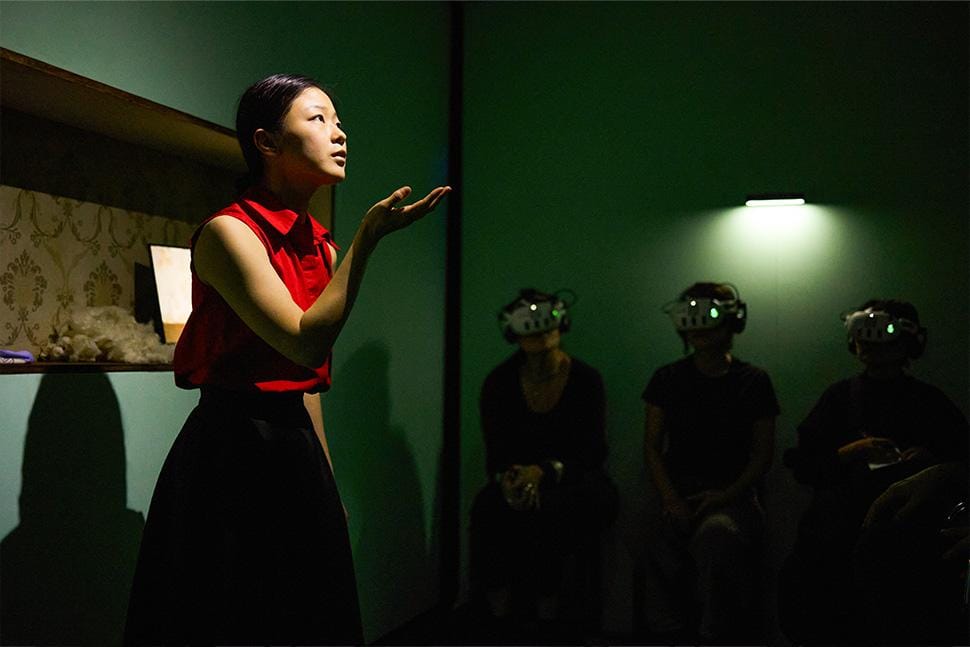
Directed by: Craig Quintero, Phoebe Greenberg
Production: PHI Studio (Coline Delbaere, Julie Tremblay), Riverbed Theatre (Suling Yeh), Onassis Culture (Afroditi Panagiotakou, Dimitris Theodoropoulos, Prodromos Tsiavos)
Length: 50 Minutes
Countries: Canada, Taipei, Greece
Even days after seeing this piece, I’m still reeling (in the best way possible). Merging VR, mixed reality, immersive theatre, and installation into a haunting and poetic sci-fi narrative, Blur successfully delivers on its namesake, blurring the line between the virtual and physical realities.
From the moment we were led one-by-one into the space and processed through an eerily clinical check-in counter, Blur immediately began establishing the world it inhabits. Rather than the chorus of “have you worn a headset before?” that I heard throughout the festival from well-meaning ushers, in this experience, detached, lingering-eyed attendants whispered directions in our ears.
Whereas most LBVR experiences I’ve experienced lean into gamification, surface-level spectacle, or a pure educational angle, Blur invites the audience into an unsettlingly unsubtle story of cloning, grief, and identity. While some of the symbolism leans a touch too heavily into the abstract for my preferences, the pacing is tight and purposeful, never lingering for interaction’s sake.
There are moments here that gave me full-body goosebumps. Moments where I didn’t know which version of reality I was seeing, where I didn’t even recognize my own hands. At its core, Blur asks a simple question: "what is real?" and answers it not only through exposition, but sensation.
The Clouds Are Two Thousand Meters Up
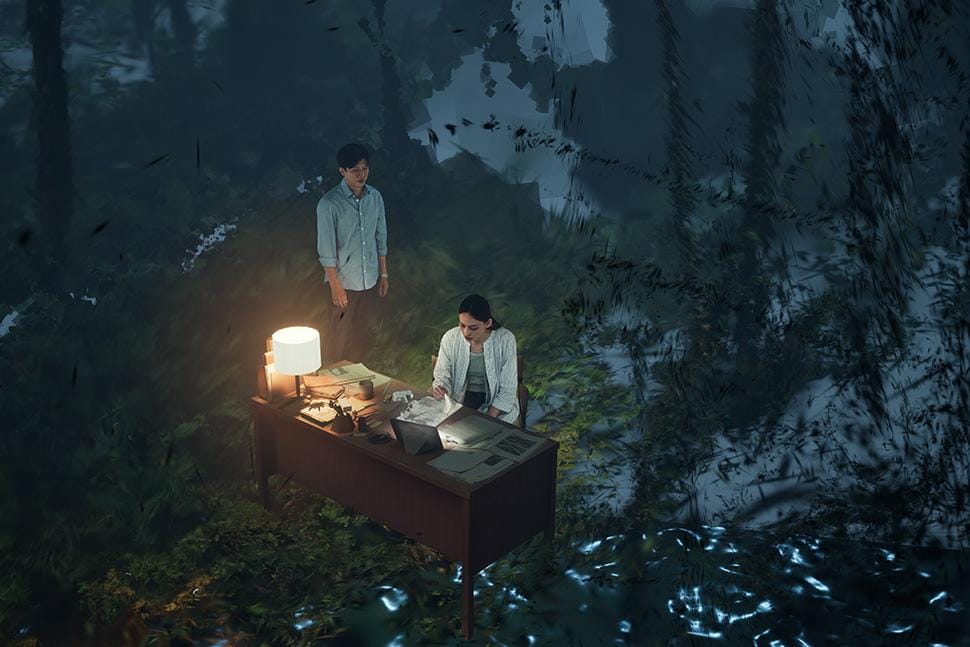
Directed by: Singing Chen
Production: Taiwan Public Television Service Foundation, The Walkers Films, Reynard Films (Katharina Weser, Maurane Cugny), Yu Pei-Hua, Lee Shu-Ping, Singing Chen, Sung Chin-Hsuan
Length: 62 Minutes
Countries: Taipei, Germany
Based on a short story by Taiwanese author Wu Ming-Yi, The Clouds Are Two Thousand Meters Up is both a technical marvel and a deeply moving narrative. The piece, which uses free-roam VR and Gaussian splatting technology, delivers one of the most visually immersive VR experiences I’ve ever seen. Details, such as being able to walk behind a character and read a letter in their hand, added texture to both the narrative and world-building of this piece.
But Clouds isn’t just flexing technological prowess. From the opening scene, which left me breathless, to its final emotional beats, the story is rich with tenderness and thematic depth. It cleverly plays on the multiple meanings of the "cloud," both the natural and digital variety. The whole project lives in that overlap, giving equal space to technology and narrative.
The Clouds Are Two Thousand Meters Up is proof that technical innovation and storytelling need not be at odds. It's the rare piece where narrative gravity and visual wonder pull with equal strength, and it left me moved at both its technological and narrative achievements.
Collective Body

Directed by: Sarah Silverblatt-Buser
Production: Atlas V (Oriane Hurard, Aurélie Leduc, Arnaud Colinart), Body of Ways (Sarah Silverblatt-Buser, Rebecca Smith), Onassis ONX, Lincoln Center for the Performing Arts
Length: 19 Minutes
Countries: France, USA, Greece
Movement and dance-based VR piece, Collective Body begins as a solo journey, easing participants into interaction with simple visual cues and intuitive motion prompts. Only later are we introduced to the presence of others: three fellow participants, each depicted in an abstract elemental form.
At first, I was a swirl of leaves, my body rendered unrecognizable. Strangely, that disconnection was freeing. No longer tethered to a physical self, I moved with a looseness and spontaneity I rarely allow myself. Later, we learned that our early movements had been analyzed and used to generate our elemental “dance profile”, hence my leafy form.
There’s no traditional narrative in Collective Body, but that’s not the point. This is a wellness experience as much as a work of art, an invitation to reconnect with your body, your instincts, and the people (or swirling elemental forms) around you. For anyone who’s ever hesitated on the dance floor, Collective Body offers a rare and beautiful chance to move freely and joyfully.
Dark Rooms
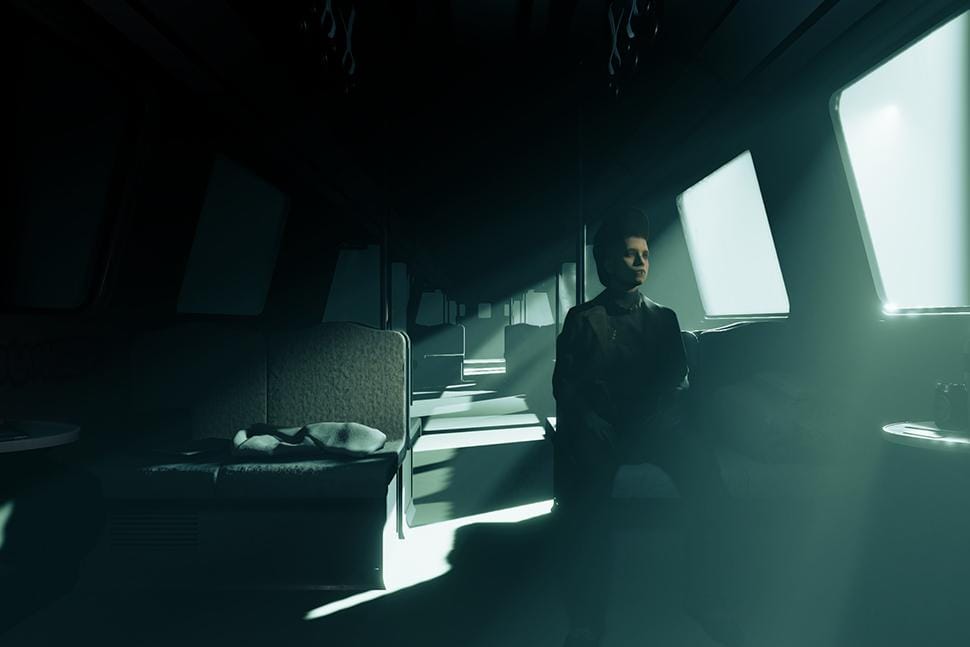
Directed By: Mads Damsbo, Laurits Flensted Jensen, Anne Sofie Steen Sverdrup
Production: Morph Film (Maximilian Mayrshofer, Kate Lis, Bjarke Due Gunslev), NowHere Media (Gayatri Parameswaran, Felix Gaedtke, Lilian Hess, Mia von Kolpakow, Agnieszka Kracla), NAXS Studio (Han-Yu Feng, Chin-Hsuan Sung, Dai-Yun Nien), Makropol (Mads Damsbo), Bedside Productions (Anne Sofie Steen Sverdrup)
Length: 35 Minnutes
Countries: Denmark, Germany, Taipei
Dark Rooms invites the audience into the world of Berlin’s sexual subcultures without ever requiring them to physically enter one of the actual spaces. Inside the VR piece, we’re guided through three deeply personal stories drawn from the city’s “Dark Rooms,” each revealing a distinct community and mindset, as well as how each individual discovered these spaces for themselves.
Minor technical glitches appeared during my run, but nothing that overly broke immersion. What stayed with me most was how Dark Rooms uses immersive technology to build empathy. These are spaces many might never enter physically, out of fear, lack of access, or discomfort, yet the piece lets viewers witness them in a way that feels personal and nuanced rather than voyeuristic. For me, the impact was visceral: discomfort, sadness, hope, belonging, even joy - all felt on behalf of the storytellers who chose to share their worlds so openly.
At the end of the experience, the audience is invited to decompress in several ways. First through a conversation with an AI designed to help individuals unpack what you’ve seen. It’s not immediately clear that your conversation partner isn’t human and the chat felt a little uncomfortable at first, but the idea of giving participants a moment to process before stepping out of the virtual space is thoughtful. In addition, once the headset comes off, a small themed installation space invites audience members to sit, unwind, and listen to an audio reflection, easing the transition back to the real world.
For anyone curious but hesitant about these subcultures, Dark Rooms is a thoughtful, if at times intense, first step toward understanding.
Great Orator
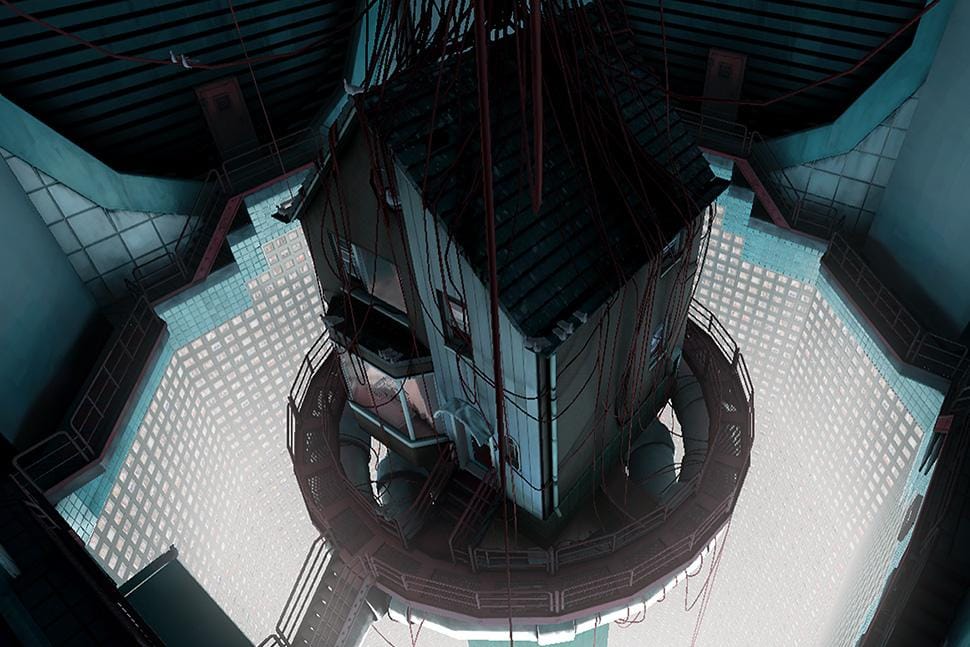
Directed By: Daniel Ernst
Production: The Shoebox Diorama (Daniel Ernst) with the support of Codeglue LIACS KO Productions
Length: 40 Minutes
Country: The Netherlands
At first, The Great Orator felt like an escape room stripped of its locks and riddles. You wander a vast, liminal environment, guided only by your own curiosity and the ever-watchful eye of the omniscient, titular narrator. Point at any object long enough, and the Orator will tell you a story about it. Each tale is generated by AI, and different every time, even if you were to re-select the same item. The world is steeped in secrecy - a cult-like atmosphere, cryptic spaces, and knowledge of being constantly watched suggests there should be puzzles to crack. However, my role was less about solving puzzles and more about decoding my own existence in this world.
Though I tend to shy away from AI-driven immersive pieces, I really enjoyed The Great Orator, in part because it’s one of the few I’ve experienced that doesn’t flaunt its AI origins. This piece isn’t about AI. Here, AI simply helps populate this world with just the right touch of surreal, slightly odd details, deepening the sense that something’s not quite right.
HeartBeat – son cœur a trouvé sa cadence dans le silence des rencontres
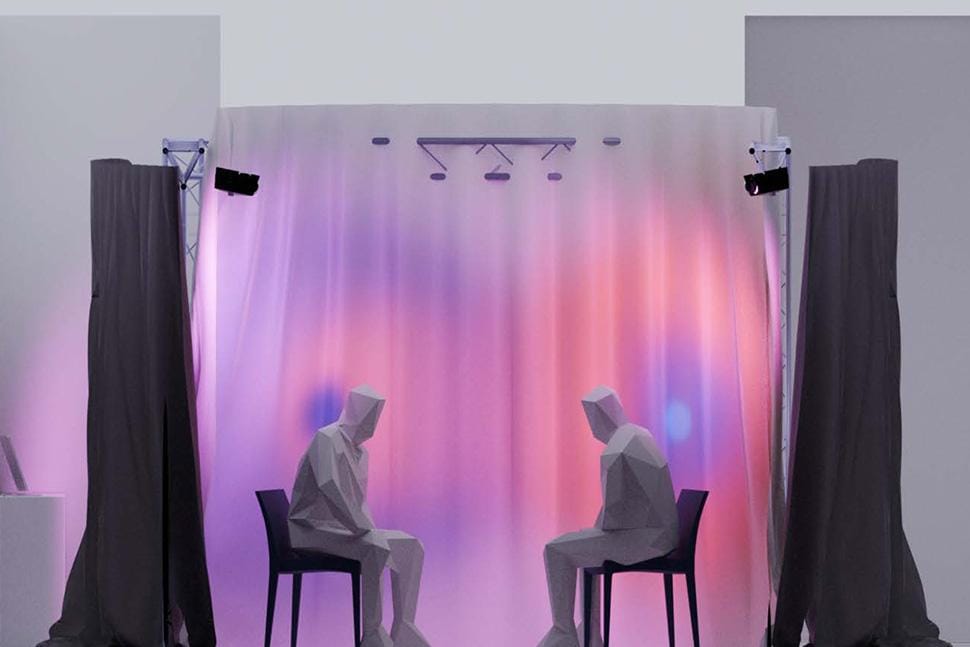
Directed by: Bonnie Lisbon (Fanny Fortage)
Production: ENTER.black (Bonnie Lisbon,Fanny Fortage)
Length: 10 Minutes
Country: France
HeartBeat is one of the few Venice Immersive pieces that did not make use of a headset, and one of the most moving experiences I had all festival. In this intimate installation, two participants (ideally strangers) wear heart rate monitors and sit face-to-face. At first, our own separate heartbeats were visualized as flashes of light. We were then instructed to make eye contact with our partner and, slowly, as the lights pulsed, our rhythms began to synchronize.
HeartBeat challenged my comfort zone, but once I leaned into it, I found something genuinely beautiful on the other side. In fact, it even sparked a new friendship with my scene partner. Wwhile I personally loved the comfortable discomfort of it all, I spoke to others who found the forced intimacy unsettling. Perhaps clearer labeling regarding participant interaction might be helpful, especially for pieces like this where the presence of another person is integral. However, for the right audience, HeartBeat is a powerful piece about human connection.
Le Magie Opera
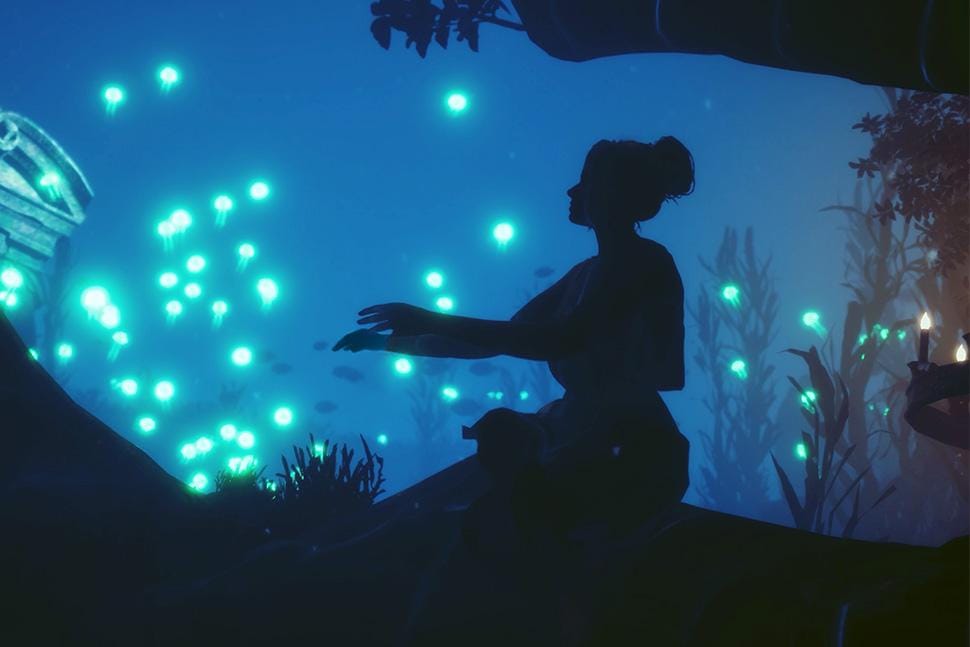
Directed By: Jonathan Astruc
Production: BackLight (Frédéric Lecompte, Jonathan Tamene, Jérémy Ouvry, Kevin Raul), Opéra National de Paris (Alexander Neef, Aude Accary-Bonnery), VIVE Arts (Celina Yeh)
Length: 25 Minutes
Countries: France, Taiwan
Another free-roam VR moment, this time in the gilded halls of the Paris Opera. In La magie opéra, we step into the shoes of a stage extra, guided through the venue’s hidden corners and grand stages by a nervous young soprano named Céleste. As she prepares for a major performance, Céleste shares her insecurities and dreams, each emotional beat illustrated through sequences inspired by famous operas Rusalka, Tosca, and Carmen.
The experience shines in its sense of spatial freedom. We’re free to explore, and the transitions between realistic architecture and surreal operatic dreamscapes are clever and transportive. At one point, a set of glowing footprints beckoned me forward toward what looked like a massive gap in the floor. I genuinely hesitated in fear, until the ground reappeared beneath my feet.
By the finale, we’re onstage beside Céleste, performing in Carmen and taking a joyful bow under stage lights. La magie opéra is a poetic and playful celebration of opera, not just its music, but also the anxieties, triumphs, and the stories that live within it. For newcomers and seasoned opera fans alike, it’s a magical exploration of the art form.
Less than 5Gr of Saffron

Directed by: Négar Motevalymeidanshah
Production: Ten2Ten Films (Gwenaëlle Clauwaert)
Length: 7 Minutes
Country: France
Short in runtime but staggering in emotional impact, Less than 5Gr of Saffron is a bold, dialogue-free reflection on memory, migration, and the lingering effects of displacement. Through a stylized and visually striking art style, the piece tells the story of Golnaz, a young Iranian refugee adjusting to life in Germany. A simple act, purchasing a small portion of saffron at her local grocer, triggers a sensory unraveling of her past.
Scenes of joy, longing, and trauma flicker through Golnaz’s memory. Depictions of violence appear alongside those of love and mundanity, eliciting a visceral reaction from me. At a mere seven-minute runtime, every moment in Less than 5Gr of Saffron is purposeful. It's a wonderful example of how immersive storytelling can distill complex, personal histories into something universally resonant. For those who may not share Golnaz’s story, Less than 5Gr of Saffron offers an urgently empathetic window in. For those who do, it may feel achingly familiar.
This was one of the most impactful pieces I experienced at Venice Immersive, and one I believe everyone should see.
Pasaulių sutvėrimas (Creation of the Worlds)
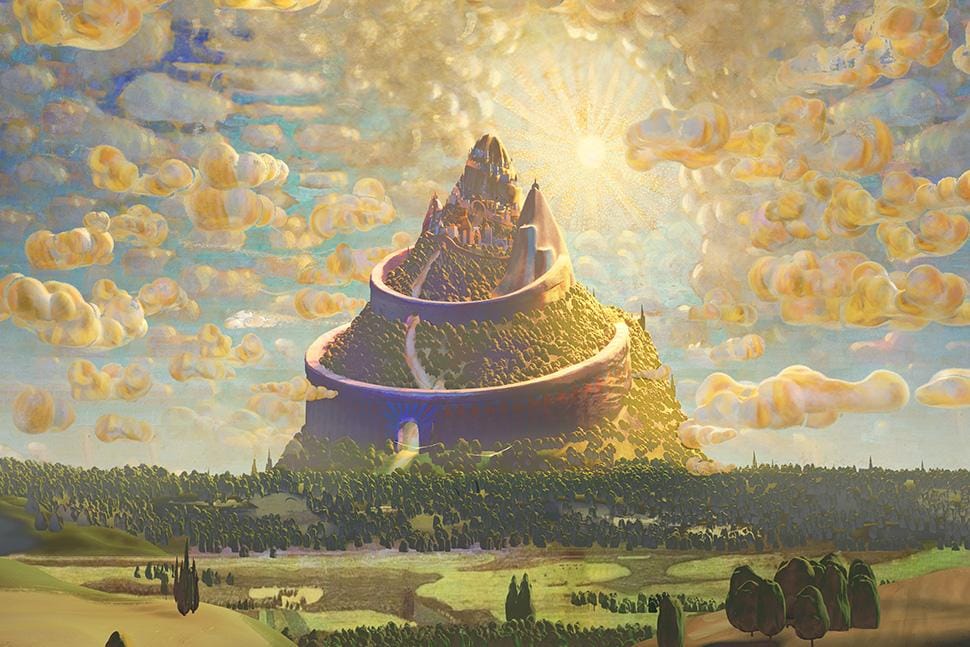
Directed by: Kristina Buozyte, Vitalijus Zukas
Production: Oniroco, Natrix Natrix, Okta, Vitalijus Žukas, Kristina Buožytė, Lukas Verpetinskas, Eleonora J. Romuva. Project partially funded by Lithuanian Film Centre (LFC), Film Tax Incentive of the Republic of Lithuania.
Length: 28 Minutes
Country: Lithuania
Inspired by the visionary works of Lithuanian artist and composer Mikalojus Konstantinas Čiurlionis, Pasaulių sutvėrimas (Creation of the Worlds) is a meditative journey through sixty of his visual compositions, brought to life in VR, and underscored by reimagined versions of his own music.
It’s a reverent adaptation that feels more like a guided spiritual experience than a conventional narrative. The piece seamlessly transitions through Čiurlionis’s dreamlike worlds, creating a contemplative rhythm that allows the viewer to absorb the mood and movement of each scene. The music is perfectly timed, elevating the atmosphere without overpowering it, and the fact that it was composed by Čiurlionis himself adds another layer of depth to the experience.
At the close of the show, I was invited to flip through an art book featuring Čiurlionis’s various works, and was impressed by how many artworks the piece incorporates into its imagery. Pasaulių sutvėrimas is both a beautiful immersive artwork in its own right and an extraordinary introduction to an incredible creative.
A special shout-out to Face Jimping by Tender Claws, which also participated in competition. Here's the blurb I wrote about the piece after I saw it at SXSW earlier this year:
Face Jumping

Directed by: Samantha Gorman, Danny Cannizzaro
Production: Tender Claws (Yuxin Gao, J Noland)
Length: 25 minutes
Country: USA
Tender Claws’ delightfully surreal and experimental VR work is on full display in their newest piece Face Jumping. Utilizing the Quest Pro’s eye-tracking technology, the piece allows participants to shift perspectives by making eye contact with different characters, animals, and anthropomorphized objects. With moments of humor, intrigue, and tension, Face Jumping proved to be one of the most engaging experiences on display.






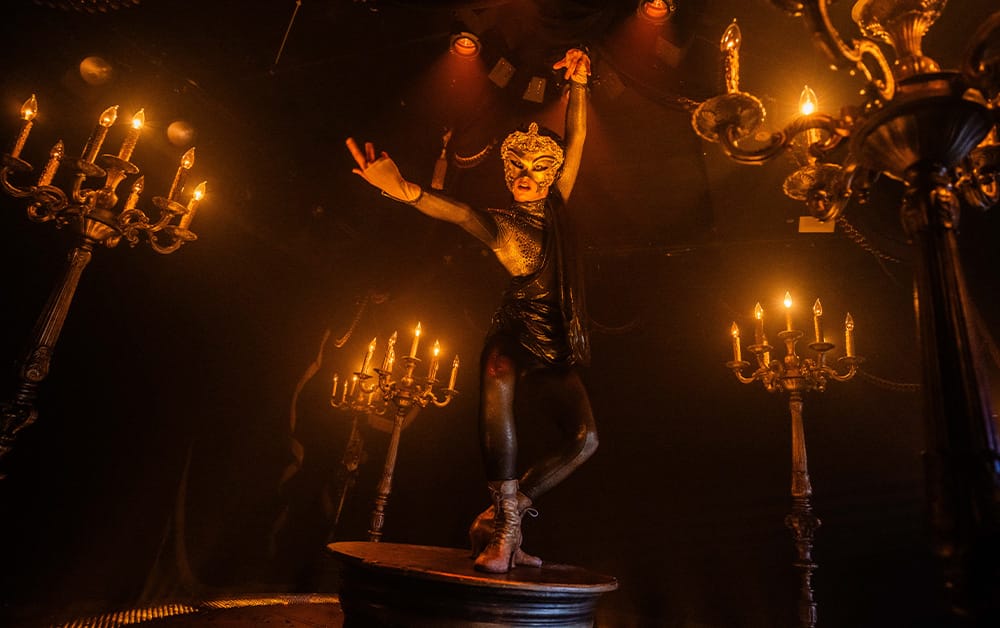



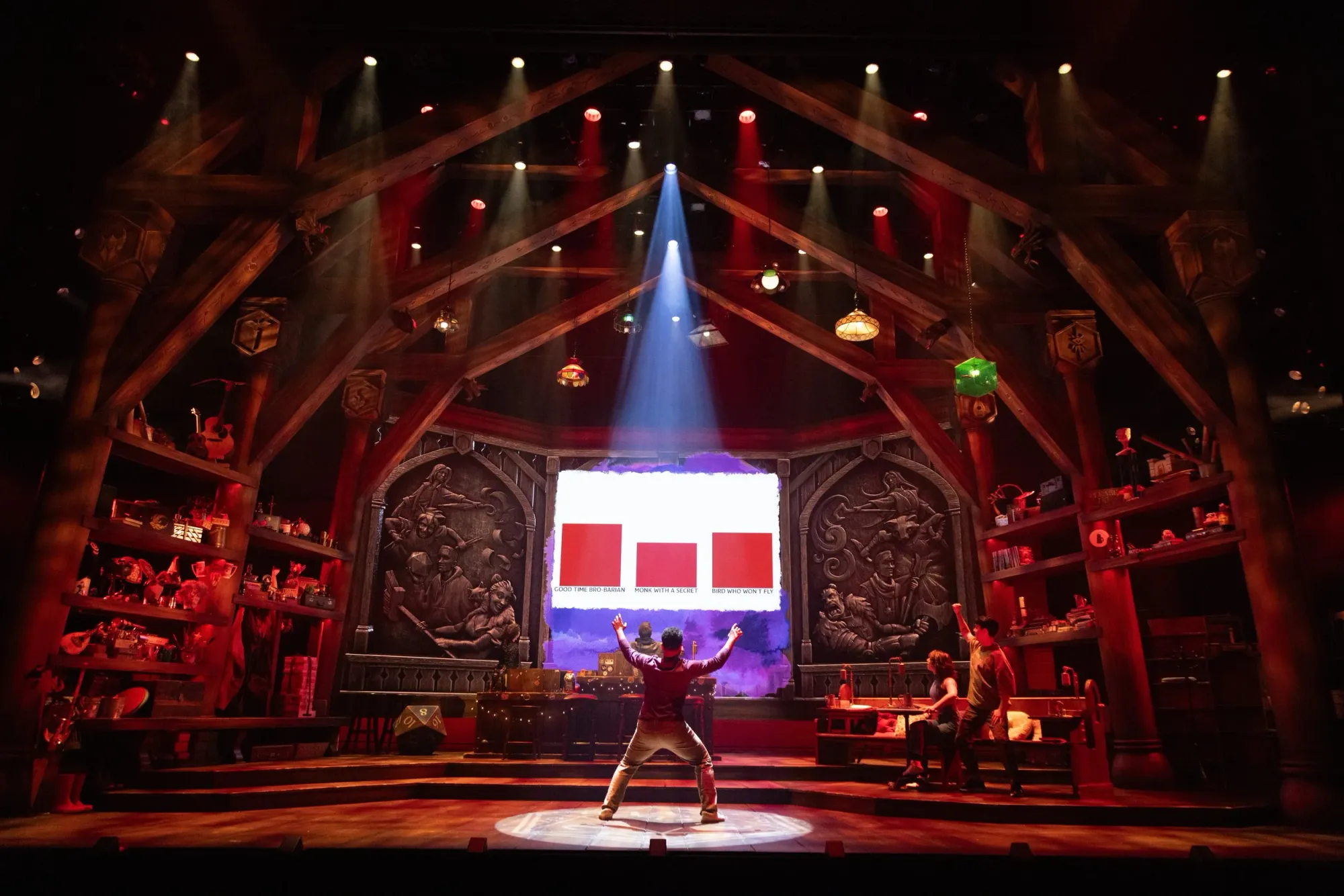
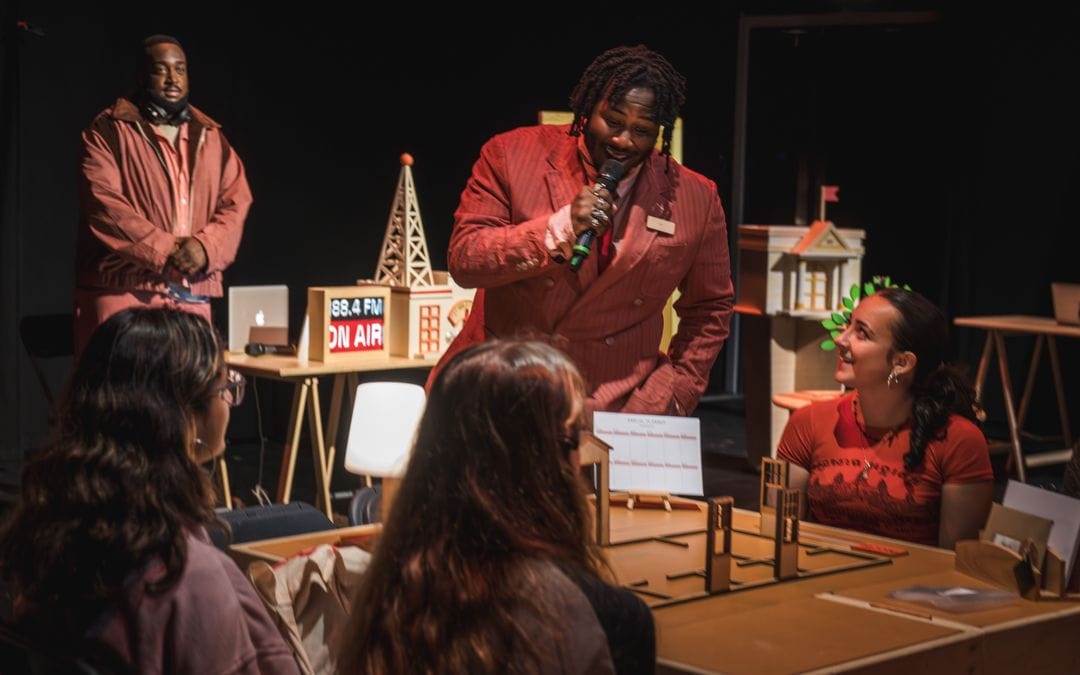







Discussion